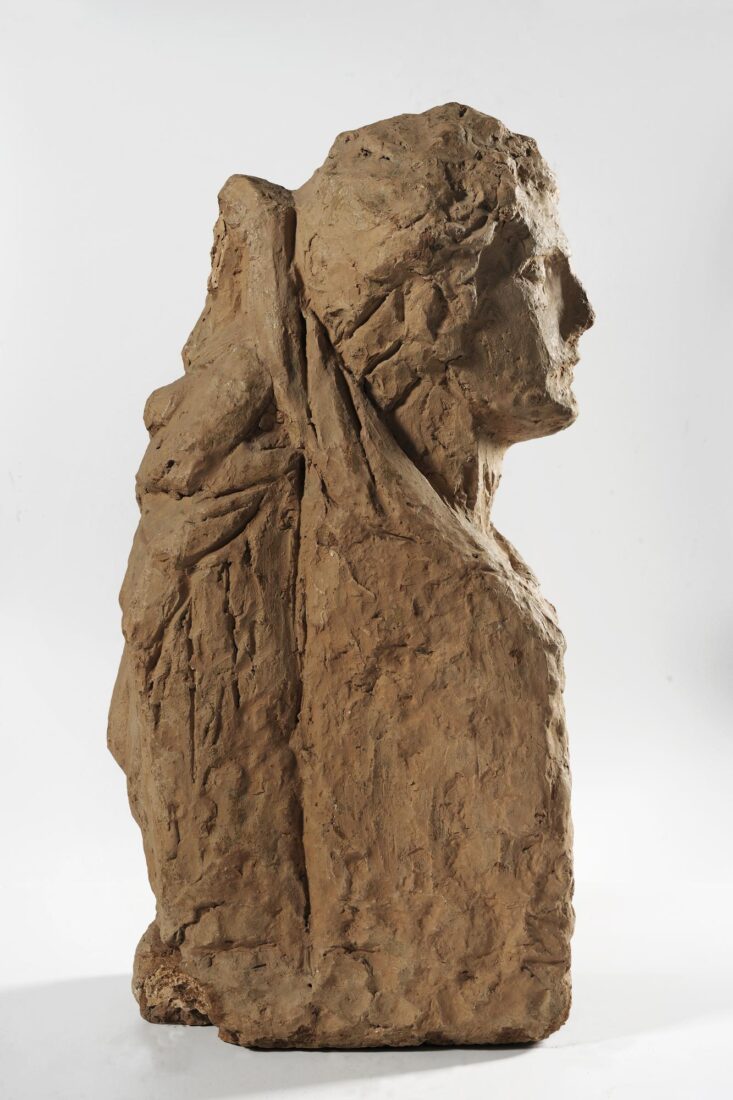We use cookies to make our site work properly, to personalize content and ads, to provide social media features and to analyze our traffic. We also share information about how you use our site with our social media, advertising and analytics partners. Read the Cookies Policy.

Chalepas Yannoulis (1851 - 1938)
Saint Barbara and Hermes, before 1925
Clay, 54 x 26 x 19 cm
Donated by the Bank of Greece
In 1918, 40 long years after the first manifestation of the symptoms of a deviating behaviour which led to the artist’s institutionalisation for 14 years, Yannoulis Chalepas’s second period as an artist began. During that time, Chalepas exhibited a totally different style: free and spontaneous, independent of academic training, guided by ancient Greek art. He now focused on the essence of each work, as he was not interested in detailed processing, refinement, or idealisation. His figures now became introverted (“St Barbara and Hermes“), solid and imposing (“Medea III“), almost hieratic at times (“Hermes, Pegasus and Aphrodite“). He gives, using spare means, the tone in the pose or facial expression and transforms his works into psychographic portraits (“St Barbara and Hermes“,“Resting female figure“,“Hermes, Pegasus and Aphrodite“). Moreover, several complementary elements, probably of an obscure symbolic meaning (“Medea III“), often add to the main theme and give a surreal tone to the work as a whole. The artist made clay models, not seeking a more finished version; he was engaged in several works at the same time. Not using an internal frame, he continued to make works inspired by the Greek antiquity and mythology (“St Barbara and Hermes“, “Hermes, Pegasus and Aphrodite“, “Medea III“), figures inspired by the urban environment, or his village (“Harvester“, “Hunter“), female nudes (“Reclining female figure“, “Small reclining female figure“), different-scale figures combined, as well as his characteristic as much as hard to interpret works (“The secret“,“ The thought“, “St Barbara and Hermes“), selecting themes suggestive of his personal experiences.

